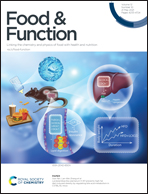Effects of Limosilactobacillus fermentum CCFM1139 on experimental periodontitis in rats
Abstract
Periodontitis is a polymicrobial inflammatory disease often characterized by the excessive colonization of Porphyromonas gingivalis and Fusobacterium nucleatum, which causes alveolar bone resorption and advanced oral inflammation. This study aimed to evaluate the effect of Limosilactobacillus fermentum CCFM1139 on experimental periodontitis induced following ligature and infection with P. gingivalis and F. nucleatum in vivo. The results showed that L. fermentum CCFM1139 significantly reduced weight loss associated with periodontal inflammation (p < 0.05), while decreasing both the P. gingivalis and F. nucleatum populations within the oral cavity of rats (p < 0.05) and regulating the expression of tumor necrosis factor-alpha, interleukin (IL)-1 beta, and IL-8 in the periodontal tissue (p < 0.05). Microcomputed tomography (micro-CT) and histopathological examination revealed that L. fermentum CCFM1139 supplementation reduced the level of alveolar bone loss and bone porosity and increased bone volume (p < 0.05) in the experimental animals. Furthermore, L. fermentum CCFM1139 exhibited promising effects in preventing the deepening of the periodontal pocket and the increase in the gap between adjacent molars. Thus L. fermentum CCFM1139 was shown to have solid potential as an oral probiotic for protection against periodontitis suggesting that this may be a good candidate in the production of a new functional food for improving periodontitis.



 Please wait while we load your content...
Please wait while we load your content...